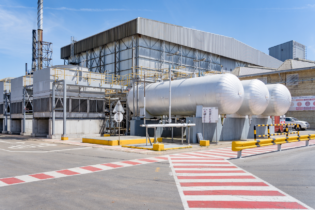
Majority of South Africa’s electronic waste (e-waste) is being exported, with the country losing out on the economic potential of an entire waste stream.
In a recent study conducted by the Council for Scientific and Industrial Research (CSIR), the Department of Science and Technology (DST) and research and development organisation, Mintek, it was found that approximately 90% of printed circuit boards and 80% of plastic recovered from e-waste in the country are exported for reprocessing.
However, according to Keith Anderson, chairman of the e-Waste Association of South Africa (eWasa), e-waste industry players do not have much of a choice, and therefore export the waste.
Why?
This is due to South Africa not having the required processing technology on a large scale.
The waste association highlighted the value e-waste has as a secondary raw material, and its potential toxicity if mishandled or improperly discarded.
In some cases, South Africa’s e-waste is also imported into foreign countries such as China or India illegally.
Waste Research, Development and Innovation Roadmap
The DST began a 10 year programme, the Waste Research, Development and Innovation Roadmap programme, which is currently run by the CSIR.
Spearheaded by Professor Linda Godfrey, she said the aim of the study was to assess the technology currently used in the dismantling, pre-processing and processing of e-waste in South Africa.
“By knowing what technology is currently in use and where the gaps are, we are able to identify new areas for research and innovation, both technological and social innovation,” she said. “However, this study was always going to be about more than just identifying research needs.”
She added that the industry needs to look at ways to retain our secondary resources, such as e-waste, for as long as possible in the local value chain before they move into the global economy.
Dr Makhapa Makhafola, general manager of research and development at Mintek, said determining the flow of materials across the country’s various e-waste streams was important in order to identify potential e-waste recycling opportunities.
Challenges
However, Godfrey pointed out that access to e-waste was the biggest constraint when it came to e-waste recycling in South Africa.
According to 2011 statistics, only 11% of South Africa’s e-waste was being recycled.
“This doesn’t mean that 89% of our end-of-life electrical and electronic equipment ends up in landfills, although there certainly is leakage,” Godfrey said.
“Instead, much of our e-waste is locked up in offices, homes, storerooms and so forth,” she added. “By increasing the collection, sorting and recycling of waste in SA, we create more opportunities to recover valuable resources that can feed into downstream manufacturing, and as a result, more opportunities for jobs and enterprise development.”
Knock-on effect
The exporting of e-waste not only has an economic effect on the country, but affects jobs too.
Godfrey pointed out that currently, the waste sector generates around 25 jobs per 1,000 tonnes of handled e-waste.
“If we can unlock this uncollected e-waste into the local value chain, we can create opportunities to grow SA’s e-waste recycling economy, as well as opportunities to increase investment in appropriate technologies and in innovative new technologies,” she said.
Industry experts maintain that South Africa’s gross domestic product (GDP) could increase by 0.5% if resources are introduced back into the environment through waste stream management, and also, by exploring and capitalising on the country’s 13 waste streams, 13,661 new full-time jobs can also be created.
*Parts of this article were sourced from
IT Web.









